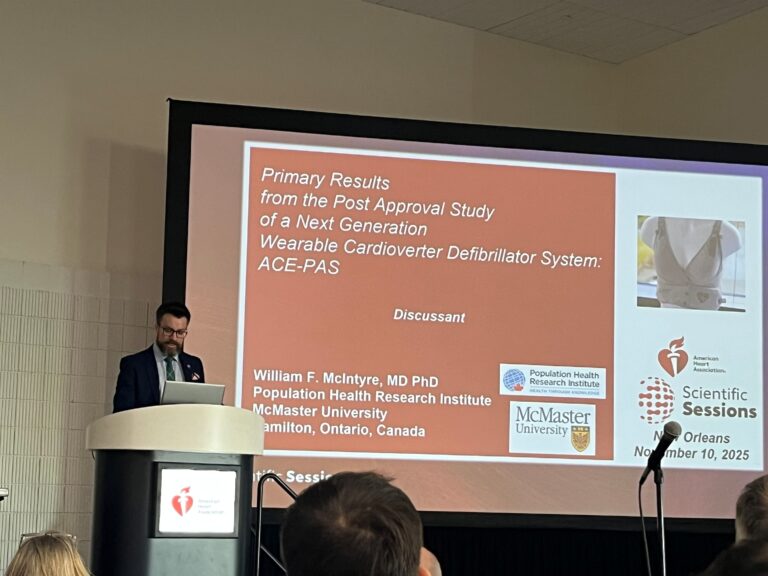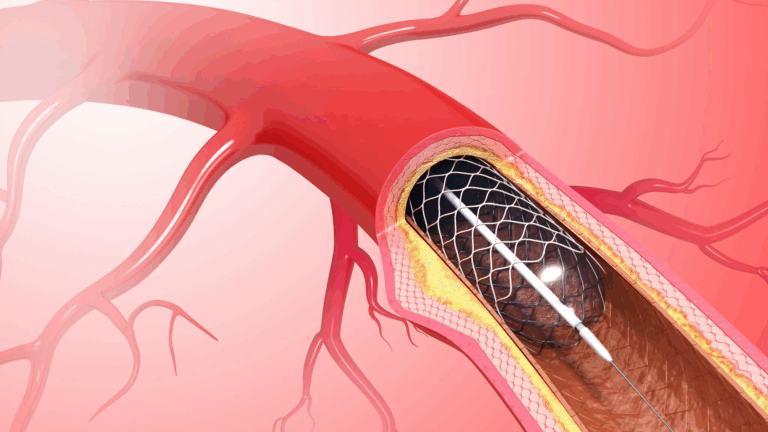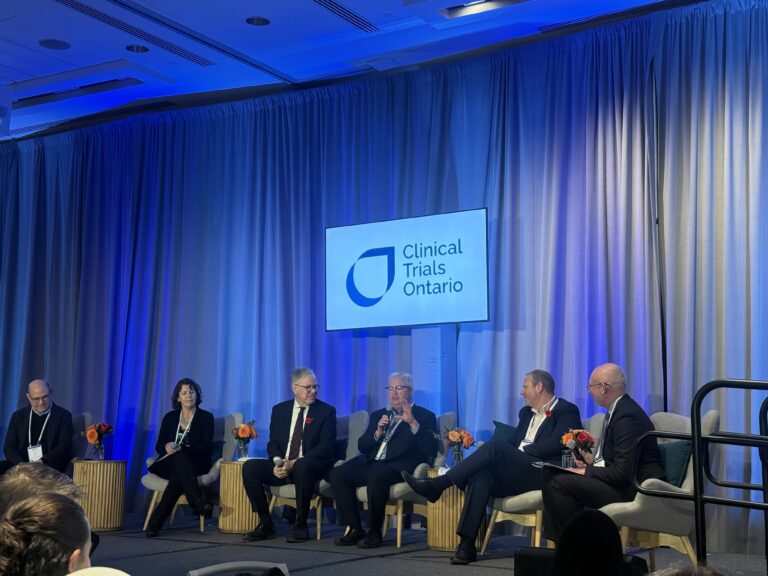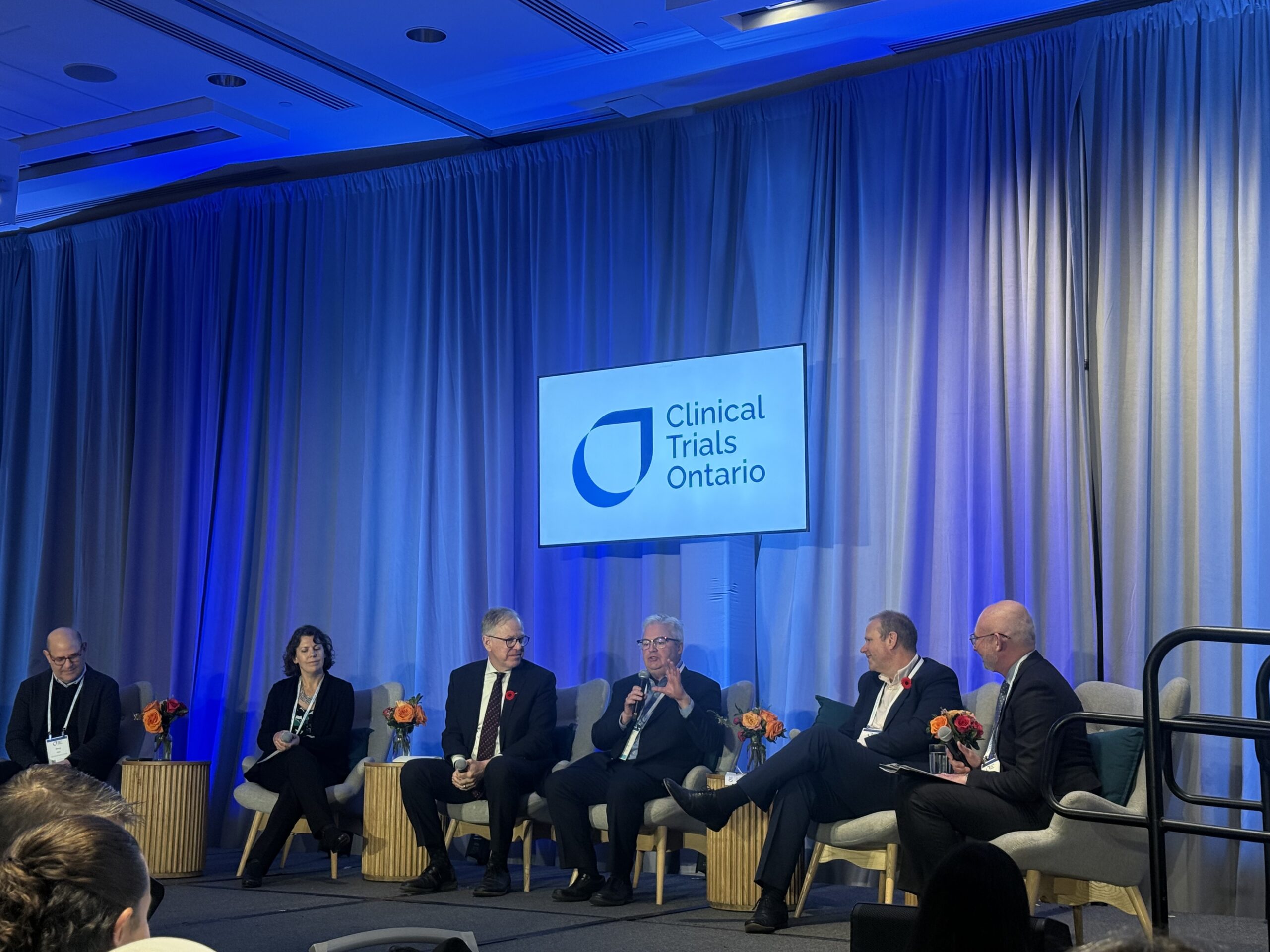In a recent AHA Stroke Alert podcast, PHRI Scientist Mike Sharma discusses the 2021 publication, Frequency and Patterns of Brain Infarction in Patients With Embolic Stroke of Undetermined Source, the result of a MRI sub-study of the NAVIGATE ESUS trial. ”
The following are excerpts from Mike Sharma’s conversation with podcast host, Negar Asdaghi.
He notes that the NAVIGATE ESUS MIND sub-study ended up with a subset of the whole ESUS population, 918 out of 7,000 – roughly 13% – so “it’s reasonable to think that what we found is representative of the ESUS population in general.”
The MRI sub-study found 93% of ESUS patients with evidence of infarcts, 70% in multiple vascular territories. Two-thirds of the patients did not have a history of TIA or stroke but had multiple infarcts on their neuroimaging.
Representing a clinical radiographic dissociation in the ESUS population, Sharma notes “what we know in the number of other covert studies, and other epidemiological work, is the proportion of [covert] infarcts without clinical symptoms that have been identified as stroke – roughly 5 to 10 times symptomatic events… In looking across literature, I suspect that some of these (perhaps a majority) had symptoms which were transient, which they didn’t appreciate the significance of, or were not identified as stroke at the time. So, this is similar to what’s been seen in other populations – just more striking, I think, because of the embolic nature of this condition.”
“I think this really points to the significance of identifying these patients. We expect them to continue to have these covert infarcts, and I prefer the term “covert” to “silent.” Silent means it’s not really having any manifestation, whereas covert indicates a hidden and nefarious purpose. So, these things do detract from cognition, from motor function, they correlate with disability and recurrent stroke. So, this condition seems to us to be very dynamic and really needs to be addressed…”
The future for ESUS trials
Mike Sharma observes “where we are with ESUS is similar to where we were with mechanical thrombectomy with the early trials, which were negative but taught us a lot, and so has NAVIGATE ESUS. Really honing in on a population that’s likely to respond – there are now a number of interesting trials being done.”
“One of these is ARCADIA, and I would encourage everybody to refer patients for this trial. Run from Columbia University through NIH StrokeNet, the trial is looking for patients with ESUS who have markers of atrial myopathy, randomizing to anticoagulation or aspirin. So, really honing in on a population likely to respond!..”
“The other thing that we are working on are better treatments. At the same time NAVIGATE ESUS was being done at PHRI, we were doing COMPASS which used low-dose rivaroxaban 2.5 milligrams BID with aspirin. One of the startling findings in COMPASS was a 50% reduction in ischemic stroke occurrence. If you think about it, emboli can be fibrin-rich or platelet-rich or some combination, and we really don’t know. So, if there is a safe dose to combine aspirin with an anticoagulant, that is a promising approach. Currently what we are doing is a trial using Factor XI inhibitors…”
“If you think broadly across stroke prevention, we have made advances using dual antiplatelet therapy, but they seem to be hitting a ceiling in terms of efficacy with some risk of hemorrhage, and it certainly seems to be the case from NAVIGATE and also RE-SPECT ESUS, which used dabigatran, that anticoagulation by itself won’t work…”
“From COMPASS, we have this dual pathway approach combining anticoagulation and antiplatelet agents. The novelty here that we are pursuing is using anticoagulants, which have a much lower risk of hemorrhage. So, Factor XI, unlike Factor X, which is affected by rivaroxaban, is not involved in hemostasis, but rather amplifies thrombi, and we know that Factor XI-deficient patients have a low rate of stroke, lower than matched controls, and really no significant spontaneous hemorrhage…”
“There are a number of trials currently in DVT. We are running really the first trial ever done in stroke at phase two to develop an appropriate dose of anticoagulation for these patients. So, I think the future is going to be combining anticoagulants with antiplatelet agents to reduce these patterns of embolic stroke…”
“This holds a lot of promise after what we saw in COMPASS, and indeed we did a similar MRI study in COMPASS, which taught us a lot about how to do these trials. So, currently, we are working on those, and the first results from two trials using Factor XI inhibition. This approach should be available to us next year…”
Believe it or not, Mike Sharma tackled even more topics than these excerpts indicate; listen to the full podcast at AHA Stroke Alert.

Mike Sharma in the MRI control room, Hamilton General Hospital (pre-COVID).




